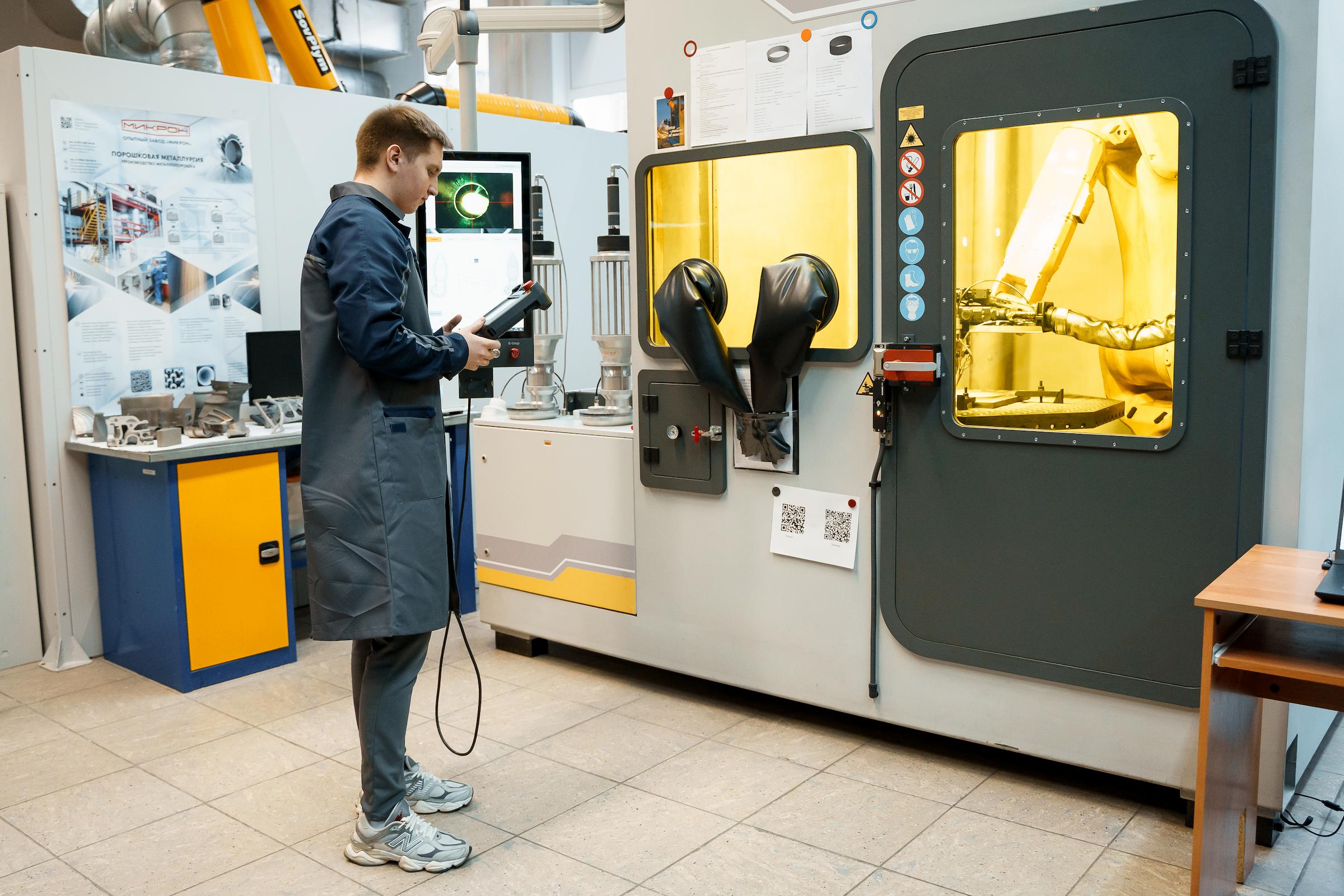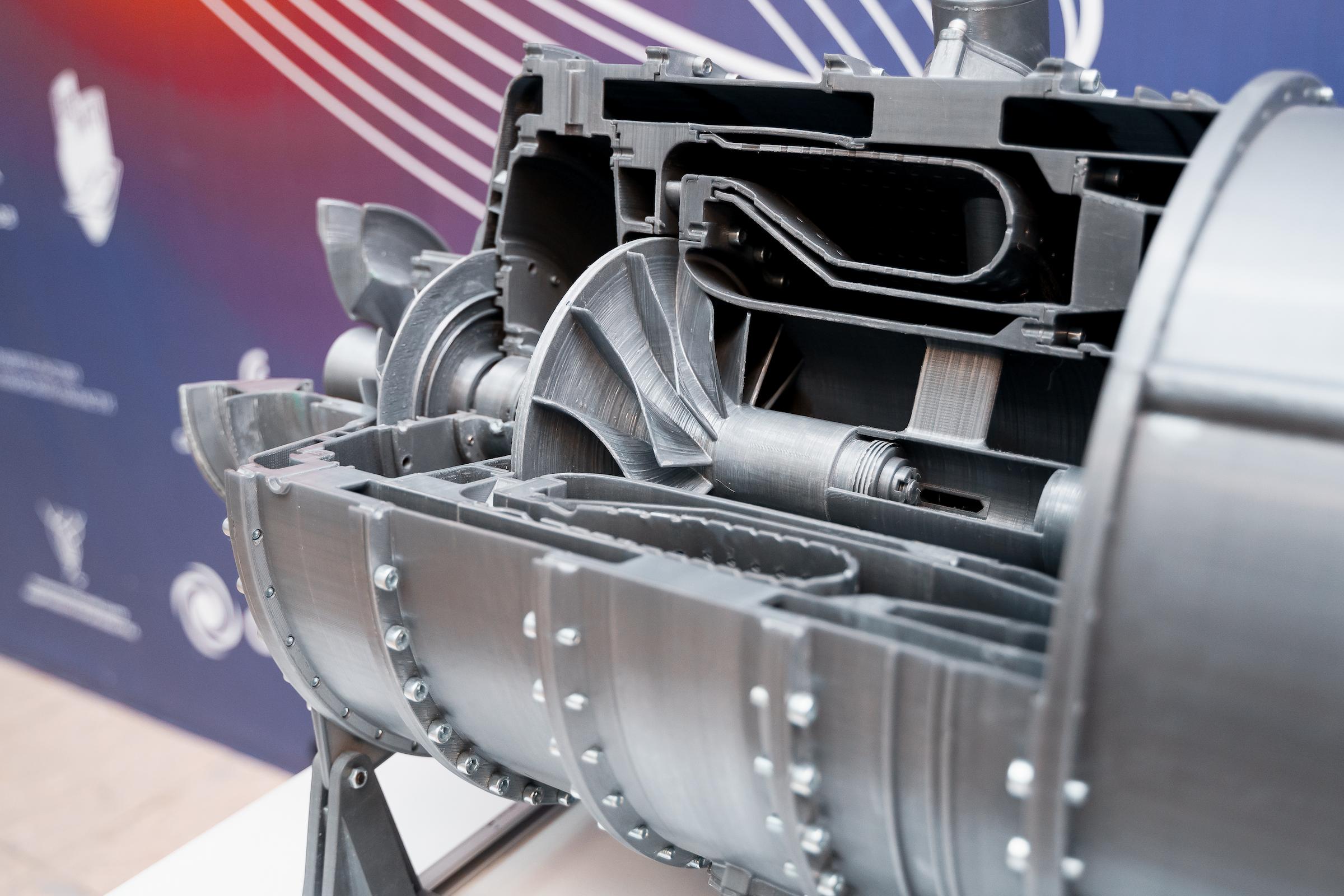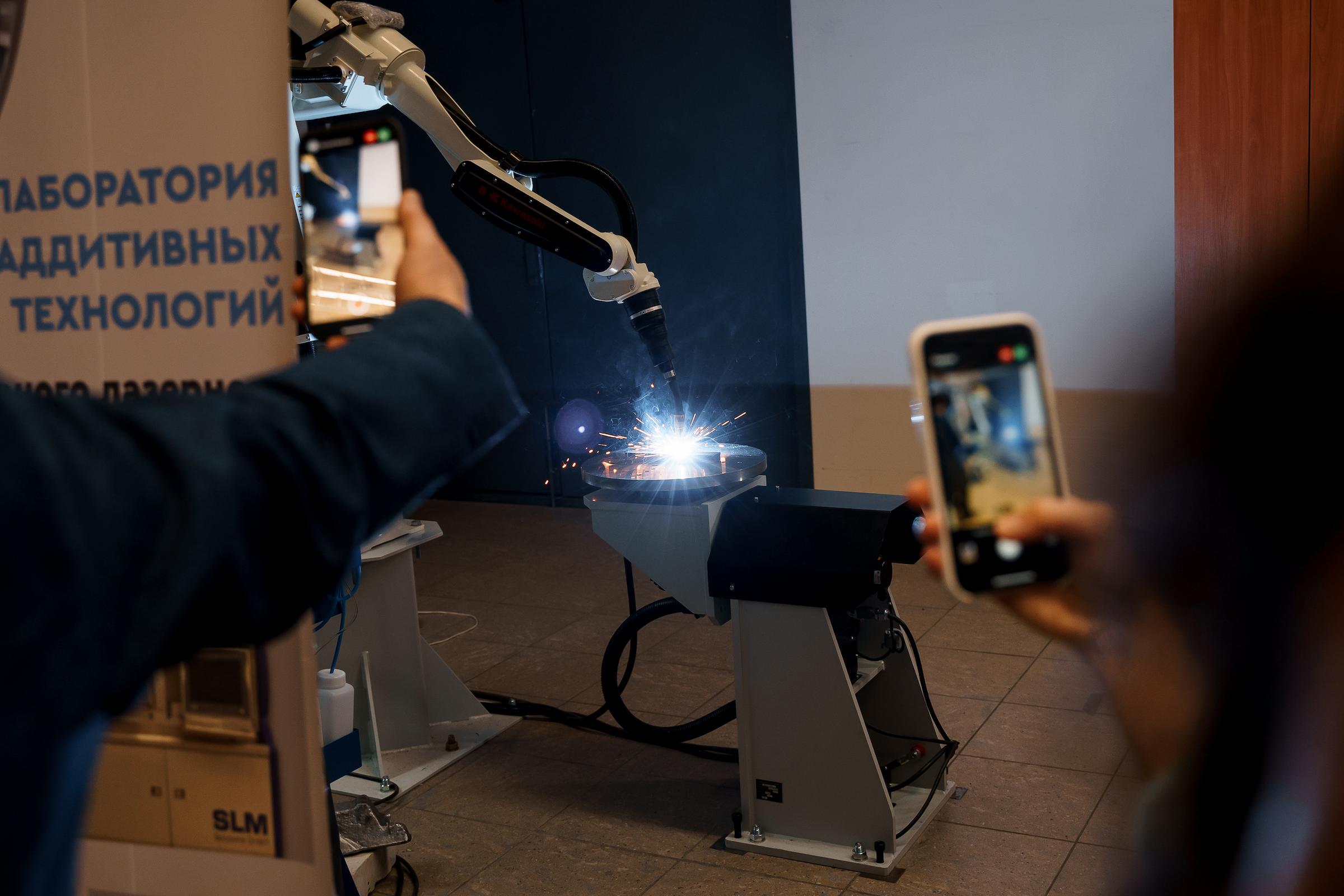“The Centre opened today is furnished with advanced domestic equipment in the field of additive technologies, which makes it possible to quickly solve import substitution problems and implement by order of industrial enterprises the most daring design solutions, applying domestic metal powder mixtures.
Prospective areas of using the Centre's equipment are propulsion engineering, production of parts and components for aviation and space technology, nuclear power industry, oil-refining and gas-and-oil producing industries”, said Vitaly Smelov, Director of the Institute of Engine and Power Plant Engineering of Samara University.
According to Vitaly Smelov, competence of the Centre's employees and the available equipment will be able to ensure the full production cycle of manufacturing parts and components. Due to additive technologies, it is possible to manufacture products of the most complex shape in the shortest time, including parts with internal channels or topologically optimized constructions.
At present, the Centre’s main equipment is the ILIST-L direct laser growing unit, developed and manufactured at Laser and Welding Technology Institute of Saint Petersburg State Marine Technical University. The unit is a high-performance industrial complex designed to work with heat-resistant alloys, stainless and high-strength steels.
This robotic complex allows manufacturing large-sized parts with their diameter up to 1,300 mm, height — up to 600 mm, and weight — up to 500 kg, while the growth productivity is very high — up to 2.5 kg/h. The high-power laser beam melts metal powder, which results in forming inside the material, because of rapid heating and cooling, the fine-grained structure providing high strength of the grown products.
The unit can manufacture complex thin-walled products, as well as so-called gradient products, which are ones with variable set chemical composition and physical properties. Mechanical properties of the resulting parts will meet requirements for stamped ones, without pores and cracks, and during the growing process, necessary functional coatings can be applied to the product surface. Moreover, hybrid structures can de produced by combining additive and traditional technologies — welding, casting, stamping, machining. When manufacturing parts and structures of complex shape, reducing the number of technological operations will significantly increase productivity, while decreasing material, energy and labor costs.
“Switching to new intellectual technologies makes it possible to organize high-performance production based on combination of technologies, when both additive and combined additive technologies will be applied, depending on the requirements for functional properties of the parts. The design of key parts of modern aerospace engineering will take into account technological capabilities of additive technologies in the field of obtaining blanks of parts with complex geometries of external and internal surfaces, which will allow applying elements of topological optimization and the concept of “smart” design when developing them, increase their manufacturability and reduce the number of parts and assembly units”, said the director of Institute of Engine and Power Plant Engineering.
One of the projects to be implemented in the Samara Centre will be creation of the joint high-tech production of parts and components of the hot part of industrial gas-turbine engines with improved functional specifications, together with the UEC-Kuznetsov enterprise. The project is being implemented under the agreement with the Ministry of Education and Science of Russia. As part of the project, scientists of Samara University has already developed the intellectual support system for design and technological preparation of the production.
“This system involves multiparametric digital twins of engines and their components, which simplifies optimization of the construction and introduction of new or improved manufacturing processes for key parts of gas-turbine engines at the enterprise. According to preliminary data, the system makes it possible to reduce the production preparation time by more than two times, while labor intensity and production expenses are reduced by 30–40%”, emphasized Vitaly Smelov.
Currently, the Centre’s specialists work out complex technologies for additive manufacturing of parts and components of the hot part of promising gas-turbine engines, based on technologies of selective laser fusion and direct laser growing. Some of the parts have already been manufactured at the University, with applying new technologies, and have passed preliminary tests as part of a low-emission combustion chamber assembly, for example, the inner casing of the combustion chamber of the NK-36ST gas-turbine engine developed by UEC-Kuznetsov, widely used in our country as part of gas pumping units. Besides, the Centre produces blanks of parts for the small-sized gas-turbine installation — the low-power turbo generator for needs of distributed energy, the small-sized gas-turbine engine with thrust of 20 kgf.
For reference:
* The National Network of Technological Centers is being created in Russia on the basis of higher education institutions and enterprises of high-tech industries in framework of the Strategic Academic Leadership Program “Priority 2030”. Among key functions of the centers, there are training personnel skilled in the field of additive technologies, and performing R&D work for regional industrial enterprises, as well as exchanging competencies between participants of the National Network.
* One of the Technological Centre’s features will become work with students within technological and industrial practices for engineering areas of training, and classes in digital departments of the Program “Digital Additive Technologies” and in framework of practices within the IOT-discipline “Non-Standard Thinking and Critical Research”. On the basis of the Centre’s competence, under the research staff’s guidance, students of the profile “Design and Technology of Machinery Manufacturing” (profile “Digital and Additive Technologies”) will be able to prepare their graduate theses.
 RU
RU  EN
EN  CN
CN  ES
ES 


.jpg)
